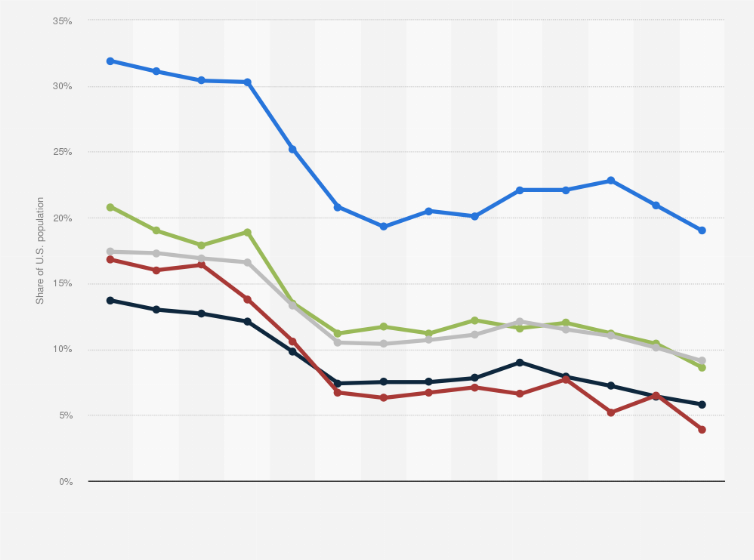Percentage of people in the U.S. without health insurance by ethnicity 2010-2023
In 2023, approximately nineteen percent of the Hispanic population in the United States did not have health insurance, a historical low since 2010. In 2023, the national average was 9.1 percent. White Americans had a below-average rate of just 5.8 percent, whereas 8.6 percent of Black Americans had no health insurance.
Impact of the Affordable Care Act
The Affordable Care Act (ACA), also known as Obamacare, was enacted in March 2010, which expanded the Medicaid program, made affordable health insurance available to more people and aimed to lower health care costs by supporting innovative medical care delivery methods. Though it was enacted in 2010, the full effects of it weren’t seen until 2013, when government-run insurance marketplaces such as HealthCare.gov were opened. The number of Americans without health insurance fell significantly between 2010 and 2015, but began to rise again after 2016.
What caused the change?
The Tax Cuts and Jobs Act of 2017 has played a role in decreasing the number of Americans with health insurance, because the individual mandate was repealed. The aim of the individual mandate (part of the ACA) was to ensure that all Americans had health coverage and thus spread the costs over the young, old, sick and healthy by imposing a large tax fine on those without coverage.













